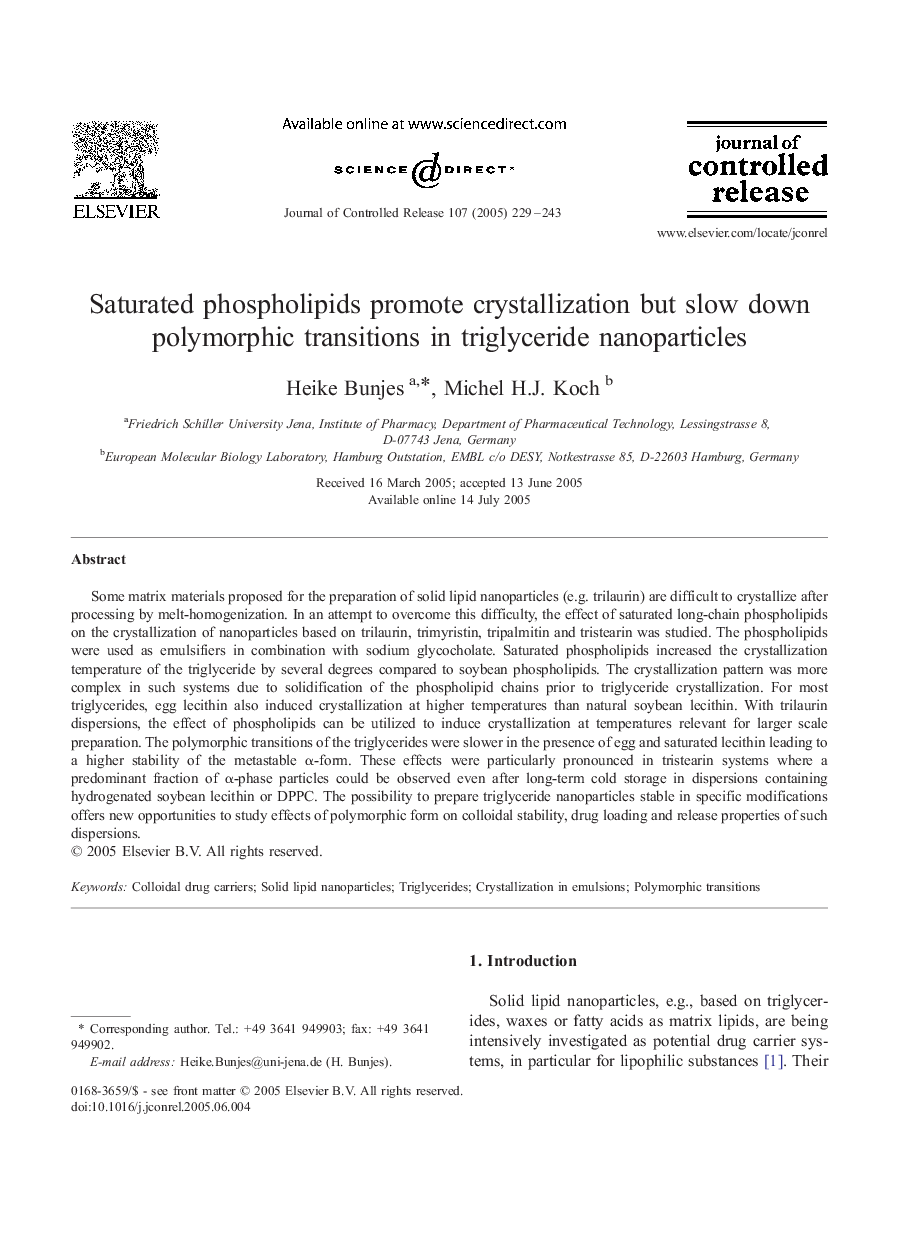| Article ID | Journal | Published Year | Pages | File Type |
|---|---|---|---|---|
| 10613472 | Journal of Controlled Release | 2005 | 15 Pages |
Abstract
Some matrix materials proposed for the preparation of solid lipid nanoparticles (e.g. trilaurin) are difficult to crystallize after processing by melt-homogenization. In an attempt to overcome this difficulty, the effect of saturated long-chain phospholipids on the crystallization of nanoparticles based on trilaurin, trimyristin, tripalmitin and tristearin was studied. The phospholipids were used as emulsifiers in combination with sodium glycocholate. Saturated phospholipids increased the crystallization temperature of the triglyceride by several degrees compared to soybean phospholipids. The crystallization pattern was more complex in such systems due to solidification of the phospholipid chains prior to triglyceride crystallization. For most triglycerides, egg lecithin also induced crystallization at higher temperatures than natural soybean lecithin. With trilaurin dispersions, the effect of phospholipids can be utilized to induce crystallization at temperatures relevant for larger scale preparation. The polymorphic transitions of the triglycerides were slower in the presence of egg and saturated lecithin leading to a higher stability of the metastable α-form. These effects were particularly pronounced in tristearin systems where a predominant fraction of α-phase particles could be observed even after long-term cold storage in dispersions containing hydrogenated soybean lecithin or DPPC. The possibility to prepare triglyceride nanoparticles stable in specific modifications offers new opportunities to study effects of polymorphic form on colloidal stability, drug loading and release properties of such dispersions.
Related Topics
Physical Sciences and Engineering
Materials Science
Biomaterials
Authors
Heike Bunjes, Michel H.J. Koch,
